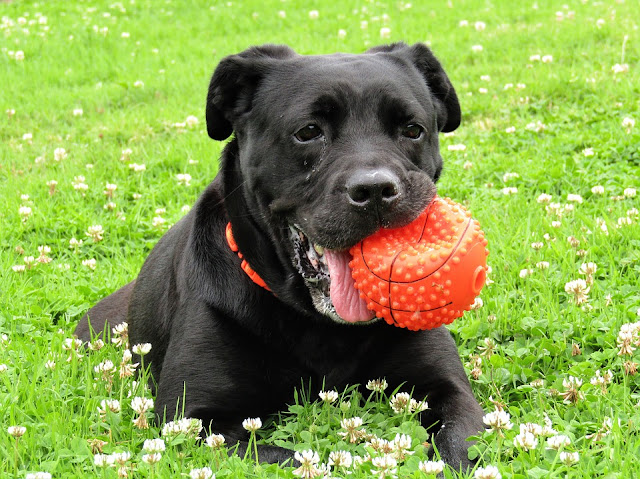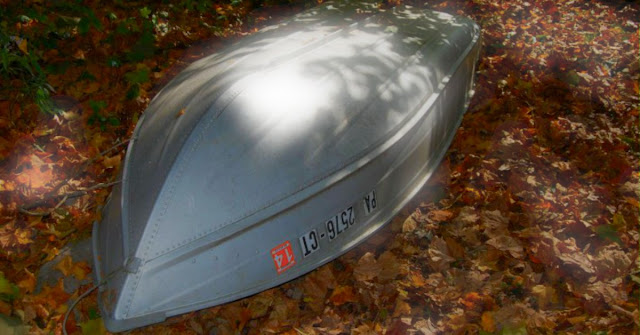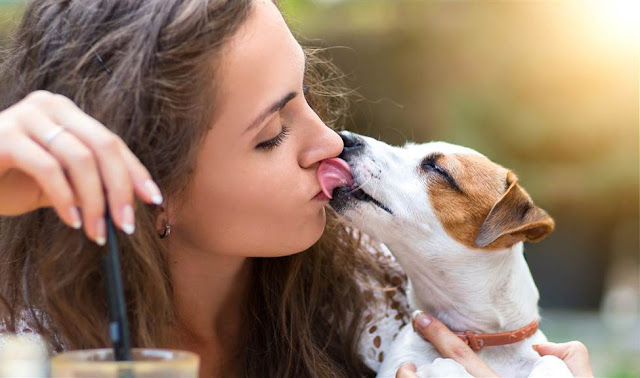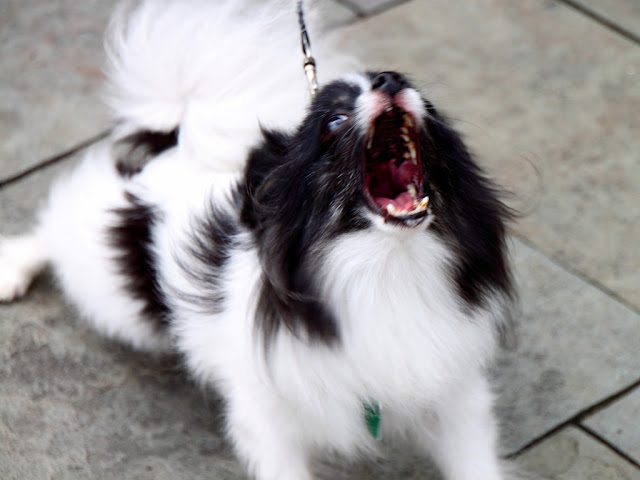Dog Canine Development and Anatomy
Where did dogs evolve from; We don't know. Many theories, including the one that a dog was once a domesticated jackal, have been discredited. In the years I have been investigating this question, I have yet to come up with a satisfactory answer. It is known, however, that dogs did not evolve from wolves, but rather both evolved from some common ancestor. To put it another way, a wolf is to a dog what a chimpanzee is to man. The latter did not "descend" from the former. Each pair represents the end products of parallel evolution. But all breeds of dogs do belong to the same species, as was recently proved when a dachshund bitch gave birth to a healthy litter sired by a St Bernard!
When a dog gives birth to a litter of puppies, she does all the training, instilling them with the basic techniques of survival, until they're about six weeks old. Then it's time for you to take over.
Naturally, if a puppy has been taken from his mother before that time, it's up to you to be both mother and trainer.
If the newly separated puppy cries, the old trick of placing a ticking clock and hot-water bottle nearby will probably calm him down.
But not because he associates the ticking with her heartbeat and the heat with her body warmth. A dog's body temperature naturally falls during sleep (as does ours or any warm-blooded animal's), and a small puppy's body volume is often too small to retain much heat and keep him from getting chilled. You'll see that puppies in a pet shop window usually take naps under, around, or atop other sleeping puppies all piled together like a bin of discount goods. Being next to another warm body simply helps the sleeping dog regulate the fluctuations in his body temperature. There fore, the hot-water bottle makes your puppy more comfortable.
As for the ticking clock, it simply provides a regular, constant, familiar, and comforting sound, and helps to mask other small noises that might unnerve him if they were heard in an utterly quiet room. A puppy is used to constant fuss and racket from his brothers and sisters, and the sudden silence and solitude of his new home affects him much as a first 16 night in the country affects a lifelong city dweller, who becomes grateful for the chirp of crickets.
In estimating a dog's lifetime, most people count seven "people" years for each year of a dog's life. But I feel that the first year of a dog's life is the equal of fifteen human years. At the age of one, your dog is an adolescent, still learning his limitations and not yet physically mature. This accelerated development emphatically points out the difference between a dog and a child. At three months, a dog can understand much more than a baby of the same age. At sixteen weeks a dog is able to sit, stay, lie down, and heel on command. No human baby can possibly master so many responses so quickly.
By age two, he's added nine more "human" years. He's now sexually mature, and grows only in strength and general savoir-faire. After the age of two, he ages at the rate of five "human years" a year. The years from two to five see a male dog grow from a young stripling to a mature, dominant animal. He's smarter now, mentally and physically, and by age five, he's reached his peak, in full control of himself and his environment. This is prime time for the male dog. By this time the owner should know him pretty well and have figured out his quirks and idiosyncrasies, and the dog has learned to accept what the master lays down vice versa. The dog retains his peak until about age seven (forty-nine "human years"). And then, though his physical strength tapers off, his mental capabilities do not, and he becomes "a smart old fox." By this modified timetable, a fifteen-year-old dog (not an uncommon age) is not a canine Methuselah, but about eighty-nine in human terms, which is not an uncommon age for anyone to reach.
Owners question me about the normalcy of their dogs. What is normalcy? Years of study make the answer available. Each dog is unique, of course, but certain patterns repeat constantly, making problem solving less of a labyrinth than it could be. Circling, for example, is usually normal. Dogs walk in circles for various reasons.
It is instinctive before defecation and before bedding down, since in the wild, it's far more comfortable to beat down the prickly grass before lying or squatting. Dogs also circle when about to fight or play-just to get into an advantageous position or to expend nervous tension.
Show me a dog who's in a bad way, and I can usually show you a master who's not observant, who can't see the obvious.
A great majority of people feel a dog is helpless since he can't talk. When your dog is in pain, he can most certainly tell you. Dogs have a way of moping around, coming up to you and nudging you.
Although they can't tell you where it hurts, their behavior patterns do alter.
An abnormal dog is simply one who acts odd to the practiced eye.
I don't claim to be qualified in medicine, all I am is an animal trainer. However, I do refer people to veterinarians who are able to tell if the dog is physically healthy.
Dogs are living creatures and should be treated with concern. One client called to say his dog had been hit by a car. I told him that he ought to see a veterinarian who, in this client's case, lived just down the block. Half an hour later, I dropped by to check, and found the owner still puttering around while his dog-whose leg appeared to be broken was apparently suffering acute pain.
Common sense is good for about 75 percent of all dog problems, but for the remaining 25 percent, you have to know a little about biology, chemistry, and sometimes plain natural history. For example, one worried owner complained about a rapidly growing tumor in his dog's ear.
I checked it out and found that the "tumor" was in reality a blood-gorged tick, which I quickly pulled off. The bump's gray color matched that of the dog's skin, and the owner panicked. What had happened was that the animal had recently romped through some long, country grass and picked up some ticks. (By the way, never apply a lighted cigarette to dislodge a tick. It's too easy to injure your dog.) A normal dog's anatomy has a few features that may seem decidedly abnormal to the novice owner. For one thing, most owners soon notice that a dog's skin fits him very loosely. A basset hound's soulful gaze is partly the result of his facial skin being too large for the skull-hence the drooping eyelids. This is primarily a defensive adaptation. Unless another dog can get a grip on the underlying muscle, the bitten dog can still maneuver within his skin for a better position. For the same reason, a dog's skin is provided only lightly with blood vessels. When a dog's skin is laid open, he will bleed only slightly unless, of course, the underlying tissue is damaged.
Similarly, his skin is provided with only a sprinkling of pain receptors. Many people are surprised to learn that our sense of touch comprises at least five sub-senses: sensitivity to pressure, temperature (heat and cold), and pain, among others. A dog's skin is relatively insensitive to pain. To get an idea of what it feels like to be inside your dog's skin, pinch the fold of wrinkled skin right over your elbow as hard as you can. This pinch, which would bring sharp pain to other parts of your body, produces only a mildly uncomfortable sensation. Your elbow takes a great deal of abrasions and abuse, and there's no point in having your "alarm system" constantly jangling. However, the muscles and bones immediately beneath your elbow are exquisitely sensitive, as you learn whenever you hit your funny bone. This is your body's way of saying that an injury to the skin in this area is standard wear and tear, but an injury that reaches any deeper is worth knowing about.
So it is with your dog's skin. If you decide to punish him by hitting his flank with a magazine, the blow may be about as troubling as a pinch on your elbow.
Your dog has a higher tolerance to pain and a lower awareness of it than you do. For example, a man with a bad leg will still favor it when he crosses the street to meet a beautiful girl he hasn't seen in months. A dog with an injured leg will race right across to get to a bitch in heat. The dog's desire is simply stronger than his aversion to pain, and so he puts it aside.
You must remember that pain is not a deterrent in itself, not even to human beings. One anthropologist passed out a number of safety pins to members of an aboriginal tribe who'd never seen such things before.
A short time later he returned to find the native children gleefully inserting the pins through their lower lips! The pins couldn't have been comfortable, but the novelty and excitement of discovery were more compelling than physical distress.
All dogs have a layer of fat beneath the skin that provides all the insulation they need for cold weather. And some dogs have a double coat consisting of long silky hairs and a woolly undercoat. A dog's skin has another unique feature, a total absence of sweat glands. This is an evolutionary adaptation to aid the dog in hunting game. With no sweat glands, the dog's body odor is far less distinct, so that other animals will have trouble locating the dog by scent alone. Even a filthy dog smells cleaner than a well-groomed horse, for instance.
But now that a dog no longer hunts for a living, his lack of sweat glands are less of an advantage. Heat will bother him much more than it would you. Dogs have a natural instinct to dig, to hide something, to find something, or just for the pleasure of digging. On a very hot day, a dog will often dig holes in the ground under bushes to find a damp layer of the earth, protected from the sun's rays, to lie in and thereby cool himself off.
Many pets die each summer from being left in parked cars. If he has no way to cool himself except by panting, a dog's body will soon heat up. If he goes to sleep, his metabolism-and hence his internal body temperature-will be lowered. But if sleep is impossible or ineffective, he may go into shock-a natural response to put the brakes on metabolism, but one that can be fatal to the dog.
Continue Reading On Next Page

















Comments
Post a Comment